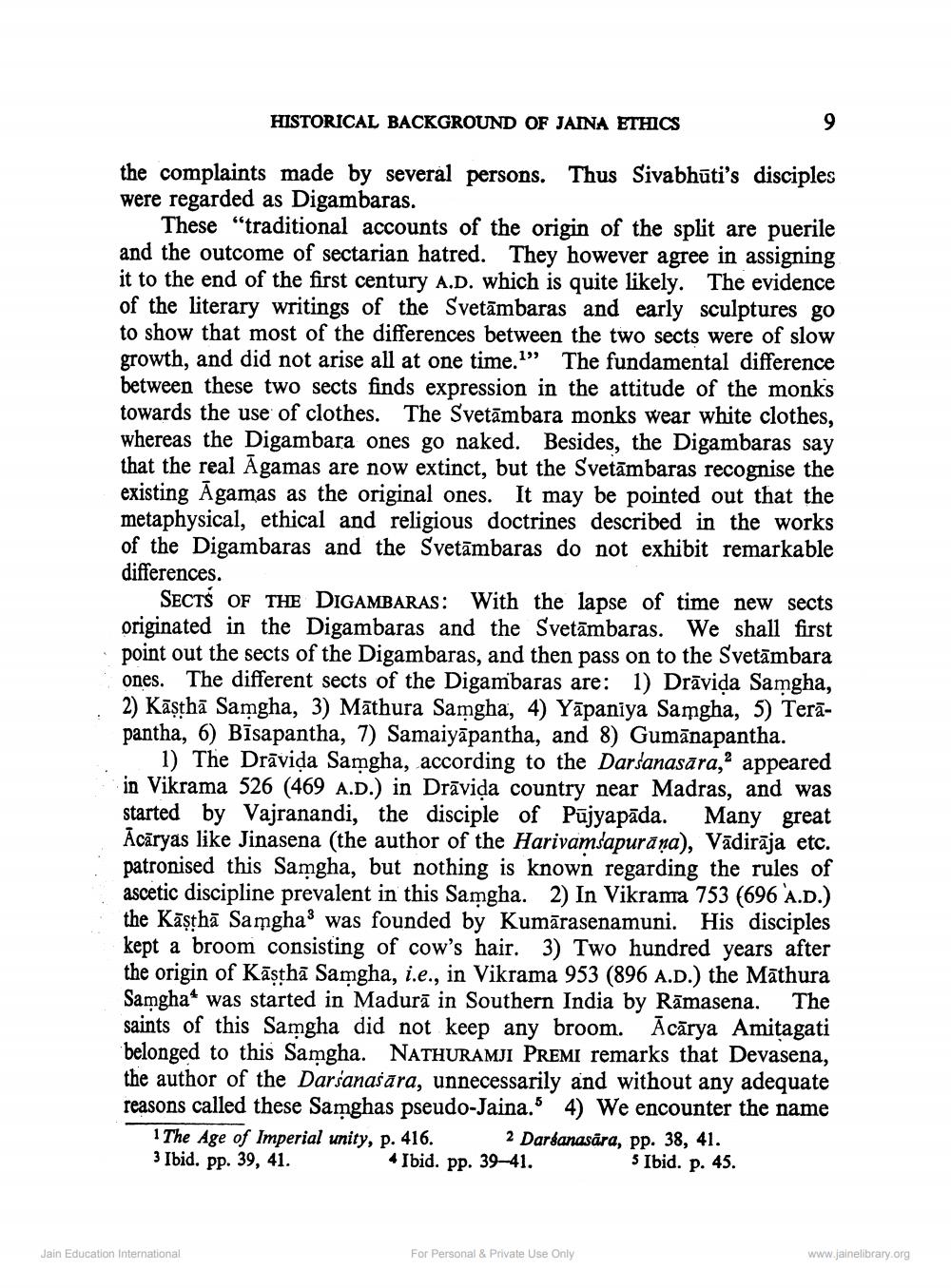________________
HISTORICAL BACKGROUND OF JAINA ETHICS
the complaints made by several persons. Thus Sivabhūti's disciples were regarded as Digambaras.
These “traditional accounts of the origin of the split are puerile and the outcome of sectarian hatred. They however agree in assigning it to the end of the first century A.D. which is quite likely. The evidence of the literary writings of the Svetāmbaras and early sculptures go to show that most of the differences between the two sects were of slow growth, and did not arise all at one time.” The fundamental difference between these two sects finds expression in the attitude of the monks towards the use of clothes. The Svetāmbara monks wear white clothes, whereas the Digambara ones go naked. Besides, the Digambaras say that the real Āgamas are now extinct, but the Svetāmbaras recognise the existing Agamas as the original ones. It may be pointed out that the metaphysical, ethical and religious doctrines described in the works of the Digambaras and the Svetāmbaras do not exhibit remarkable differences.
SECTS OF THE DIGAMBARAS: With the lapse of time new sects originated in the Digambaras and the Svetāmbaras. We shall first point out the sects of the Digambaras, and then pass on to the Svetāmbara ones. The different sects of the Digambaras are: 1) Drāvida Samgha, 2) Kāșthā Samgha, 3) Mathura Samgha, 4) Yapaniya Samgha, 5) Terāpantha, 6) Bīsapantha, 7) Samaiyāpantha, and 8) Gumānapantha.
1) The Drāvida Samgha, according to the Darsanasāra," appeared in Vikrama 526 (469 A.D.) in Drāvida country near Madras, and was started by Vajranandi, the disciple of Pūjyapāda. Many great Ācāryas like Jinasena (the author of the Harivamsapurāna), Vādirāja etc. patronised this Samgha, but nothing is known regarding the rules of ascetic discipline prevalent in this Samgha. 2) In Vikrama 753 (696 A.D.) the Kāșthā SamghaS was founded by Kumārasenamuni. His disciples kept a broom consisting of cow's hair. 3) Two hundred years after the origin of Kāsthā Samgha, i.e., in Vikrama 953 (896 A.D.) the Māthura Samgha* was started in Madurā in Southern India by Rāmasena. The saints of this Samgha did not keep any broom. Acārya Amitagati belonged to this Samgha. NATHURAMJI PREMI remarks that Devasena, the author of the Darsanas āra, unnecessarily and without any adequate reasons called these Samghas pseudo-Jaina." 4) We encounter the name
1 The Age of Imperial unity, p. 416. 2 Darsanasära, pp. 38, 41. 3 Ibid. pp. 39, 41. 4 Ibid. pp. 39–41.
5 Ibid. p. 45.
Jain Education International
For Personal & Private Use Only
www.jainelibrary.org




